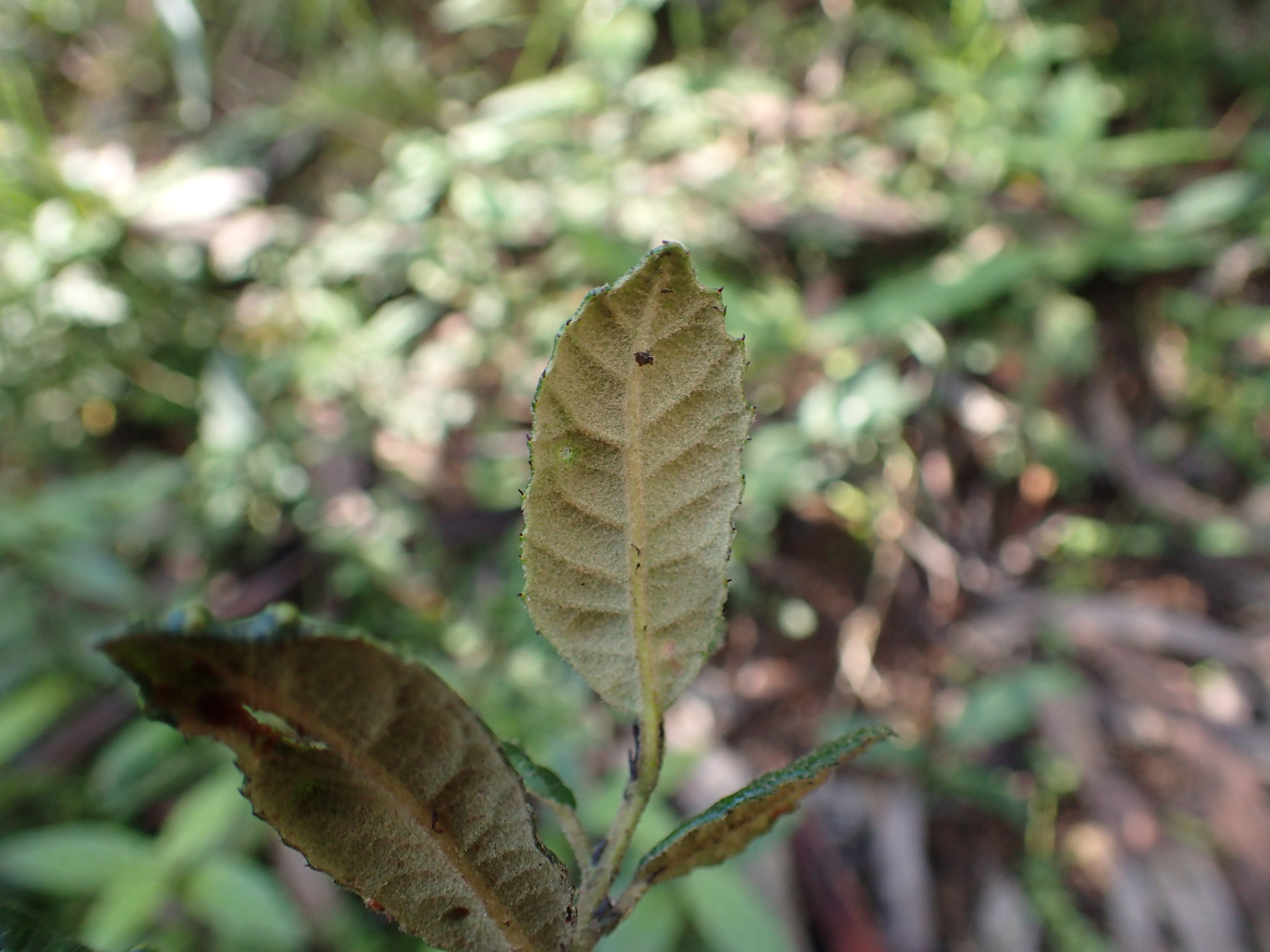
Greek elaia—olive; karpos—fruit.
Trees or shrubs. Leaves generally alternate, simple or with one leaflet and generally with a swelling at the junction of blade and stalk; margins mostly toothed. Domatia (small swellings or depressions in the axils of the midrib and side veins on the lower leaf surface) often present. Flowers in clusters on the branches, individual flowers mostly bisexual, parts in 4s or 5s. Petals divided into linear segments. Stamens numerous, mostly with 'tailed' anthers that are much longer than their filaments. Fruit a blue or black drupe; seed surface with deep wavy grooves.
A wider range of species than listed here is grown in warmer districts.
Mostly cuttings, occasionally by seed.
Swelling at base of leaf blade; 'tailed' anthers; fringed flowers; sculpted seed contained in a blue or black fruit coat.
About 290 species from tropical Africa to SE Asia and the SW Pacific (Australia has about 21 native species).
Coode (1984, 1985).
Source: (1997). Elaeocarpaceae. In: . Horticultural Flora of South-eastern Australia. Volume 2. Flowering plants. Dicotyledons. Part 1. The identification of garden and cultivated plants. University of New South Wales Press.
